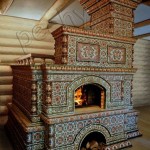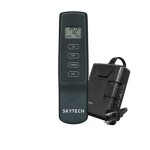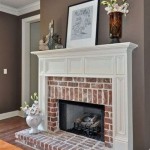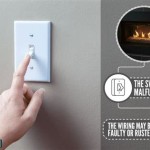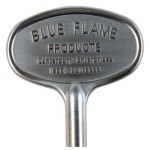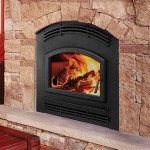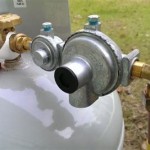How To Convert A Wood Fireplace to a Gas Insert
Converting a wood-burning fireplace to a gas insert offers several advantages, including improved efficiency, reduced maintenance, and enhanced convenience. This transition involves replacing the existing wood-burning system with a self-contained gas-fueled unit that fits directly into the fireplace opening. The process requires careful planning, adherence to safety regulations, and potentially the involvement of qualified professionals.
Before initiating the conversion, it is crucial to ascertain the suitability of the existing fireplace and chimney for gas insert installation. This assessment includes inspecting the chimney liner for cracks, obstructions, and overall structural integrity. A damaged or deteriorated chimney liner can pose significant safety hazards, including carbon monoxide leaks and chimney fires. In many cases, a new chimney liner specifically designed for gas appliances will be required.
Local building codes and regulations governing fireplace conversions must be meticulously reviewed. These codes often dictate specific requirements for gas line installation, venting, and safety features. Obtaining the necessary permits prior to commencement of work is essential to ensure compliance and avoid potential fines or penalties.
Preparing the Existing Fireplace
The preliminary step involves preparing the fireplace opening to accommodate the gas insert. This typically entails removing any existing grates, andirons, or decorative elements from the firebox. Thoroughly cleaning the interior of the fireplace is also necessary to remove accumulated soot, ash, and debris. A wire brush and vacuum cleaner can be effectively employed for this purpose.
Accurate measurements of the fireplace opening are critical to selecting a gas insert that fits properly. The height, width, and depth of the opening should be carefully recorded and compared against the dimensions provided by the gas insert manufacturer. Selecting an appropriately sized insert ensures a secure and aesthetically pleasing installation.
Any structural deficiencies in the fireplace firebox or surrounding masonry should be addressed prior to installing the gas insert. Cracks, loose bricks, or crumbling mortar can compromise the safety and stability of the fireplace. A qualified mason can perform necessary repairs to restore the firebox to a sound structural condition.
Installing the Gas Insert and Venting
The installation of the gas insert itself involves several distinct steps. Begin by carefully positioning the insert within the fireplace opening. Ensure that the insert is level and properly aligned with the front of the fireplace.
Connecting the gas line to the insert requires the expertise of a licensed gas fitter. The gas line must be properly sized and installed in accordance with local codes and regulations. Leak testing the gas line after connection is essential to ensure a safe and secure installation. Soapy water can be applied to the gas line connections to detect any leaks.
Proper venting is paramount for safe and efficient operation of the gas insert. The venting system must be compatible with the specific type of gas insert being installed. Direct vent inserts utilize a two-pipe system, drawing combustion air from outside and expelling exhaust gases through a separate pipe. B-Vent inserts rely on natural draft to vent exhaust gases through the chimney. Following the manufacturer's instructions for venting installation is critical to prevent carbon monoxide poisoning.
Safety Checks and Operational Testing
Upon completion of the installation, several safety checks and operational tests are necessary to ensure the proper functioning of the gas insert. The first step is to verify that all gas line connections are leak-free. Retesting the connections with soapy water is a prudent measure.
The gas insert should be thoroughly inspected for any visible damage or defects. Examine the burner assembly, gas valve, and control panel to ensure they are in good working order. Consult the manufacturer's instructions for specific troubleshooting steps.
A carbon monoxide detector should be installed in the vicinity of the fireplace to provide early warning of any potential carbon monoxide leaks. Regularly testing the carbon monoxide detector is essential to ensure its operational readiness. The gas insert must be operated according to the manufacturer's instructions, paying close attention to safety precautions. Never leave a gas fireplace unattended for extended periods.
A professional inspection of the gas insert installation is highly recommended. A qualified technician can verify compliance with local codes and regulations, and perform a thorough safety inspection of the entire system. This comprehensive inspection provides added assurance of a safe and efficient installation.
Regular maintenance of the gas insert is crucial for ensuring its long-term performance and safety. This includes cleaning the burner assembly, inspecting the venting system, and checking the gas line connections. Following the manufacturer's recommended maintenance schedule is essential.
Converting a wood-burning fireplace to a gas insert can significantly enhance the convenience and efficiency of home heating. However, it is a project that requires careful planning, adherence to safety regulations, and potentially the involvement of qualified professionals. By following these guidelines, homeowners can safely and effectively transform their wood-burning fireplace into a modern and efficient gas-fueled appliance.

Convert From Wood To Gas With A Insert The Kernel Burner

Convert From Wood To Gas With A Insert The Kernel Burner

Convert To Gas Installing Fireplace Inserts Doctor Flue

Can A Wood Burning Fireplace Be Converted To Gas The Flame Company

Wood Fireplaces Gas Conversion That Counts

Convert Your Old Wood Fireplace To A Gas

Convert Your Wood Burning Fireplace To Propane Ny

Update Your Wood Fireplace To A Gas

Convert A Wood Fireplace To Gas Full Service Chimney

Gas To Wood Fireplace Conversion Overland Park Ks Firplace Service
Related Posts

